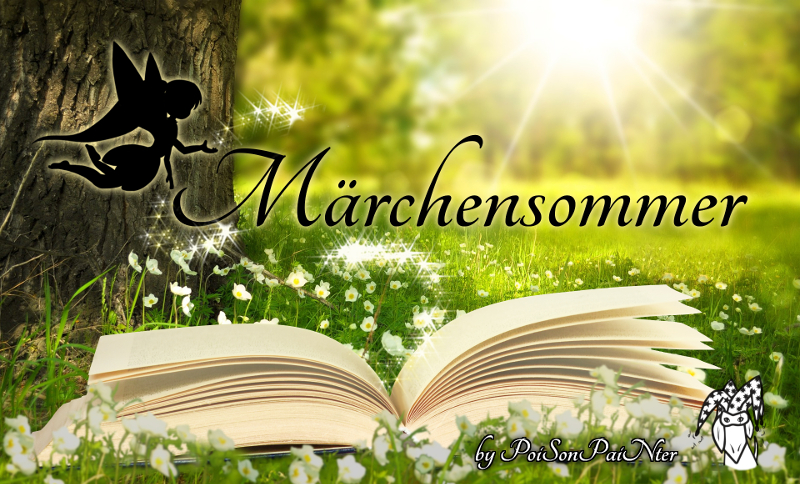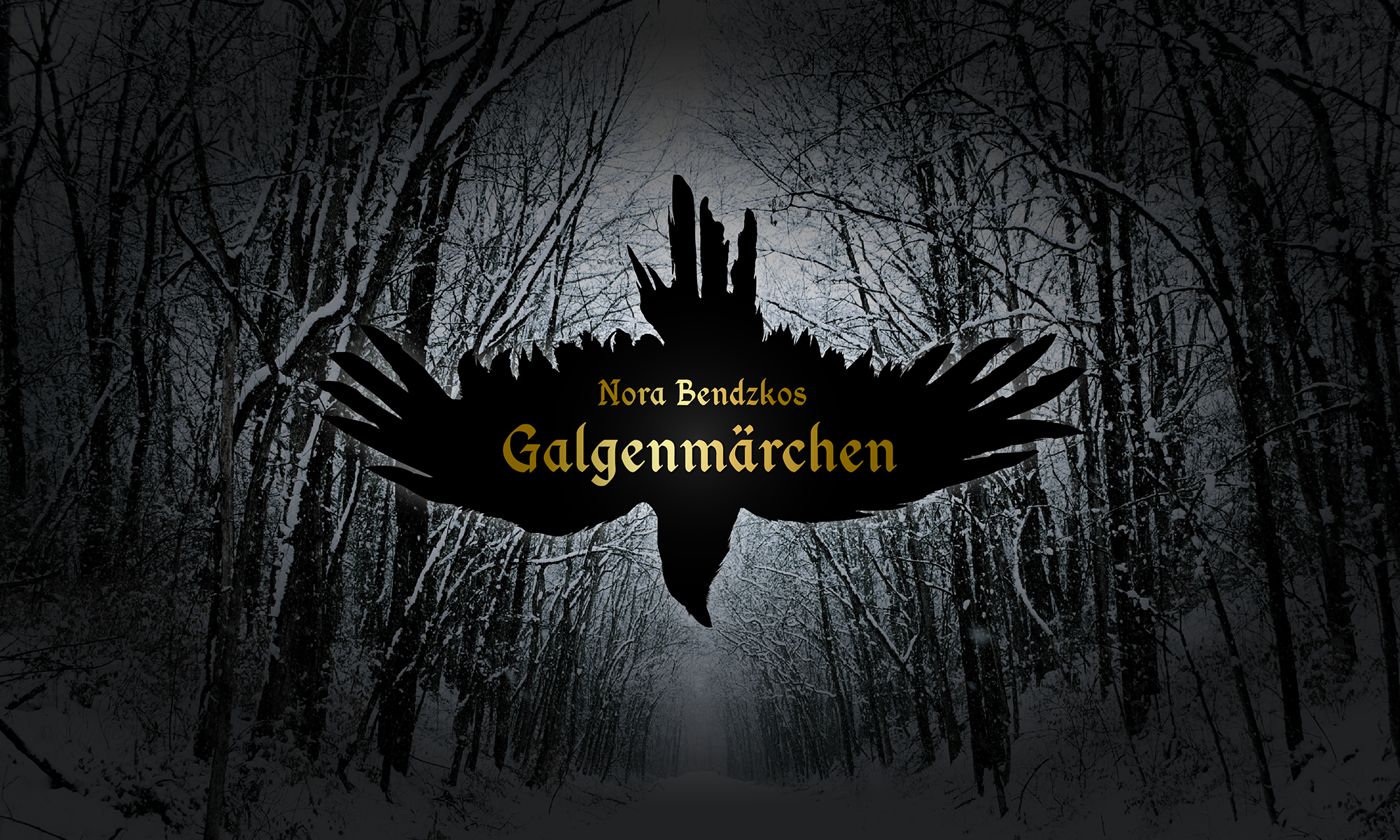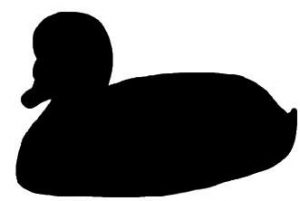Read in English
Im Rahmen des Märchensommer erhaltet ihr meine Rezension zu Der Axolotlkönig von Sylvia Rieß.
Worum geht’s?
Fynn, ein beliebter Musiker, findet sich 20 Zentimeter groß und mit seltsamen Auswüchsen, wo sein Hals sein sollte, in einem Aquarium; ohne eine Ahnung, wie er hierher kam.
Aber es scheint, dass es genau zur rechten Zeit war, denn seine neue Zimmergenossin Leonie hat nicht nur die letzte Verbindung zu ihrer Großmutter verloren, sondern sieht auch nur einen Ausweg….
Kann der axolotifizierte Fynn sie davon überzeugen, dass es eine schreckliche Idee ist?
Der Froschkönig trifft die Schneekönigin in dieser Märchenadaption der Märchenspinnerei.
Das Leseerlebnis
Aus irgendeinem Grund habe ich eine ganze Weile gewartet, um es zu lesen, nachdem ich es im Februar gewonnen hatte. Was wahrscheinlich nicht so schlimm war, da ich deswegen den Märchensommer geschaffen habe….
Wie auch immer, da Sylvia bereits auf Facebook (Märchenspinnerei Turmcafé) Einträge in der Lesegruppe veröffentlicht hat, konnte ich gleich ein paar Gedanken mit ihr besprechen. Das war eine tolle Erfahrung und ich bin wirklich froh, dass sie die Gelegenheit dazu gegeben haben. Darüber hinaus habe ich auch meine Gedanken über Goodreads festgehalten, so dass einige Dinge vielleicht vertraut klingen.
Ansonsten war ich nicht auf die Rückblende zu dem, was mit Leonies Großmutter geschah, vorbereitet. Es traf mich ziemlich hart, zumal es viel zu vertraut klang. Dieses und andere Dinge wie das Mobbing, die Depression und die Flucht in eine Online-Welt waren sehr gut dargestellt und sicherlich realistischer als das, was man manchmal von einem YA-Roman erwarten würde. Ich fand auch einige Ähnlichkeiten zu meinen eigenen Erfahrungen in dem Buch und sprach mit Sylvia darüber; anscheinend ist sie eine „Realitätsbändigerin“ und kreiert manchmal Charaktere, die sie später im wirklichen Leben trifft, was gleichermaßen erstaunlich und erschreckend ist.
Die Geschichte wird mit einem Ich-Erzähler geschrieben, der zwischen Leonies und Fynns Perspektive wechselt, was mir normalerweise nicht gefällt, aber ich habe mich mit der Zeit daran gewöhnt. Besonders gegen Ende war es die bessere Wahl, da die Gedankengespräche zwischen Leonie und Lurchi-Fynn noch komplizierter gewesen wären, als sie es bereits waren. Was übrigens eine interessante Wendung war, wie der Frosch mit der Prinzessin kommunizierte. Das einzige Mal, wenn sie von diesem Muster bricht, sind der Prolog und eine Passage in der Mitte aus einer dritten Perspektive. Die Geschichte hat auch einige Einfügungen wie Flashback (Oma, wie ich oben erwähnt habe), private Nachrichten von Leonies Online-Freunden, Facebook-Kommentare von ihren Klassenkameraden und ihre Tagebucheinträge. Seitdem ich Dracula gelesen habe, genieße ich gut gemachte Tagebuchnotizen und das war ein Beispiel dafür. Man wusste, dass es von einem Kind/jungen Erwachsenen stammt, aber zumindest nicht von einem nervigen.
Die Charaktere
Leonie ist im Grunde dein typisches gemobbtes Schulkind, außer dass sie eher dünn statt fett ist. Nur wenn man sie besser kennen lernt, was man beim Lesen des Buches tut ;), wird sie so viel mehr. Für mich war es schwer zu lesen, was sie durchmachen musste und wo sie anfing, nur um zu sehen, wo sie landete. Aber ich glaube nicht, dass ich sie bemitleidet habe. Sicher, ich wollte sie umarmen und mich mit ihr anfreunden, denn was ich über ihre Hobbys gelernt habe, klang großartig, aber ich war wütender auf ihre Klassenkameraden, weil sie ignorante A-Löcher waren…. Ich habe die Reise, die sie durchmacht, sehr genossen und war gegen Ende stolz auf sie. Sicher ist sie manchmal ziemlich melodramatisch und hat ein paar dumme Entscheidungen getroffen, aber ich denke, das ist für Kinder in ihrem Alter „normal“.
Am Anfang war ich sicher, dass Fynn definitiv verdiente, was er bekam und ich schätze, dass ich es immer noch bin, aber auch er hat eine realistische Reise hinter sich. Ich denke, dass seine Zeit weg von seinen Mitschülern, die er mit Selbstreflexion verbrachte, in diesem Prozess sehr geholfen hat. Seine Art, Leonie zu helfen, war nicht immer die klügste, aber zumindest versuchte er es. 😀 Mir gefiel auch, wie er mit den anderen Charakteren – und anderen Aquarienbewohnern – interagierte. Letzteres war sogar ein Osterei, das ich nicht näher erläutern will und nur sage, dass ich es als Erste gefunden habe 😉 Und es sorgte für eine unglaublich originelle Idee, wie man eine SMS verschickt, eines meiner Highlights.
Eine kleinere, aber nicht weniger bedeutende Rolle übernahmen Leonies Online-Freundin Mamba/Cecille, die Leonie so gut wie möglich unterstützt, und Fynns älterer Bruder Rob, der eine Offenbarung macht, die seinen Bruder sprachlos lässt. Die beiden rundeten das Ensemble ab und waren großartig und notwendig für die Reise der beiden Charaktere. Sie hatten auch eine großartige Dynamik und ich fand mich wieder mehr an Seiten- als an Hauptfiguren interessiert, auch wenn ich Leonie noch umarmen wollte….
Und natürlich gibt es Poison….einen Charakter, dessen Namen ich für einen lustigen „Zufall“ hielt (Poison ist nicht wirklich ein in der Gothic-Szene unbekannter Spitzname), auch wenn meine Alarmglocken läuteten, als ich eine seiner ersten Nachrichten las. Leonies Interaktion mit ihm führt zu einem faszinierenden und frustrierenden Wendepunkt der Ereignisse und ich bin stolz darauf, wie sie damit umgegangen ist: 🙂
Lustige Seite Anmerkung: Als ich eine Mail über die E-Book Verlosung verschickte und es mit “ Poison “ signierte, war die Empfängerin der Nachricht ein wenig irritiert, da sie dieses Buch bereits gelesen hatte. 😀
Die Charaktere haben in den Kapiteln immer mehr Gestalt angenommen und sind gut dargestellt. Jeder der vier Hauptdarsteller hat Ecken und Kanten, die ich an Charakteren sehr mag. Leonies Eltern und Klassenkameraden waren im Vergleich etwas blass, aber mehr Konzentration auf sie hätte es nicht besser gemacht.
Generelle Meinung
Das Ende gefällt mir sehr gut, besonders wenn man das Original-Märchen betrachtet. Außerdem sind die Spiegelstücke eine tolle Metapher für Depressionen, es ist nur traurig, dass es im wirklichen Leben nicht so funktioniert, also ist das Nachwort genauso wichtig.
Mit Leonies Erfahrungen wird ein sehr wichtiges Licht auf die Entwicklung der Mobbing-Kultur und deren Folgen und natürlich auf Depressionen im Allgemeinen geworfen. Es gab ein paar schwere Passagen im ganzen Buch, einige vor allem, weil ich ähnliche Dinge durchgemacht habe. Es gab auch etwas sehr Ernstes über on-line-dating für Minderjährige, die Nachrichten nicht sorgfältig genug lesen. Kurz gesagt: Während ich dies als eine YA-Geschichte betrachten würde, enthält sie auch reife Inhalte, die häufiger diskutiert werden müssen, vor allem mit jungen Erwachsenen.
Ich hätte mir auch einen näheren Einblick in die Magie der Verwandlung gewünscht, aber ich schätze, das wäre über den Rahmen der Geschichte hinausgegangen. Es gibt auch zwei Szenen, die ich gerne gesehen hätte: Cecille und Rob auf der Polizeiwache und Leonies Schultag gegen Ende. Aber ich verstehe, warum Sylvia sich entschieden hat, sie nicht hinzuzufügen.
Alles in allem ist es eine runde und tolle Geschichte über ein junges Mädchen, das lernt, um Hilfe zu bitten und es schafft, aus einem sehr tiefen Loch herauszukommen. Es hat Spaß gemacht, die Geschichte zu verfolgen und in der Gruppe zu diskutieren.
Dinge, die ich hinzufügen möchte
Zur Erinnerung: Als Teil der Herausforderung kannst du Punkte sammeln, indem du selbst Märchen rezensierst 😉
[Edit]
Sylvia hat der Geschichte eine Bonus-Szene hinzugefügt und sie mir und ihren Lesern geschenkt, oder zumindest ist es meine Schuld, dass sie sie geschrieben hat…. Wie auch immer, ich bin begeistert! Es ist fantastisch! Jetzt geh und lies sie: „Ich will sie sehen.“ Bonus-Szene!
Und natürlich: Danke, Sylvia, dass du uns die Geschichte von Leonie noch ein Stück weiter abgeschlossen hast! 🙂
[/Edit]
In ein paar Tagen bekommst du ein Interview mit Sylvia über das Buch und andere märchenhafte Dinge. Also bleibt dran!
Poison
© Für das Cover gehören den rechtmäßigen Besitzern.
P.S. PoiSonPaiNter 😉
____________________________
Lies auf Deutsch
As part of the Fairy Tale Summer you get my review for Der Axolotlkönig (The Axolotlking) by Sylvia Rieß.
What is it about?
Fynn, a well liked musician, finds himself 20 centimetres tall and with strange outgrowth where his neck should be, in an aquarium; with no idea how he got here.
But it seems it was quite on time, as his new room mate Leonie has not just lost the last connection she had had to her grandmother, but because of being bullied in school she also only sees one way out of this…
Can axolotified Fynn convince her that it’s a horrible idea?
The Frog King meets The Snow Queen in this Fairy Tale adaptation by the Märchenspinnerei.
The reading experience
For some reason did I wait quite a while to read it after I won it back in February. Which probably wasn’t that bad, seeing as I created the Fairy Tale Summer because of it…
Anyway, as Sylvia already posted entries into the Reading Group on Facebook (Magical Book Reading) I could right away discuss a few thoughts with her. This was a great experience and I’m really glad she/they provided the opportunity. In addition to that did I also keep track of my thoughts on Goodreads, so some things might sound familiar.
Other than that was I not prepared for the flashback to what happened with Leonie’s grandmother. It hit me pretty hard, especially as it sounded far too familiar. This thing and others like the Bullying, the depression and the flight into an online world were very well portrayed and certainly more realistic than what you’d sometimes expect from a YA novel. I also found several similarities to my own experiences in the book and talked to Sylvia about it; apparently she’s a „Realitybender“ and sometimes creates characters that she later meets in Real Life, which is equally amazing and terrifying.
The story is written with a first person narrator switching between Leonie’s and Fynn’s perspective, which I usually don’t like, but I got used to it over time. Especially towards the end was it the better choice as the thought-conversations between Leonie and Lurchi-Fynn would have been even more complicated than they already were. Which by the way was an interesting twist on how the Frog communicated with the Princess. The only time she breaks from this pattern are the prologue and a passage in the middle from a third perspective. The story also has some insertions as flashback (granny, as I mentioned above), private messages from Leonie’s online friends, Facebook comments from her classmates and her diary entries. Ever since reading Dracula I enjoy well made diary-narration and this was one example for it. You knew it was made by a child/young adult, but at least not an annoying one.
The characters
Leonie is basically your typical bullied school kid, except that she’s rather skinny instead of fat. Only if you get to know her better, which you do while reading the book ;), does she become so much more. For me it was hard to read about the things she had to go through and where she started only to see where she ended up. But I don’t think I pitied her. Sure, I wanted to hug her and befriend her, because what I learned about her hobbies sounded amazing, but I was more angry with her classmates for being ignorant a-holes… I really enjoyed the journey she goes through and was proud of her towards the end. Sure she’s quite melodramatic at times and made a few stupid decisions along the way, but I guess that’s „normal“ for kids her age.
At the beginning I was certain Fynn definitely deserved what he got and I guess I still am, but he too went through a realistic journey. I think his time away from his peers that he spent with self-reflection helped quite a bit in this process. His way of helping Leonie wasn’t always the smartest, but at least he tried. 😀 I also liked the way he interacted with the other characters – and other aquarium dwellers. The latter was even an Easter Egg, which I will not further explain and only say that I was the first one to find it. 😉 And it caused an incredibly original idea of how to send a SMS, one of my highlights. 😀
Smaller but not less significant roles were taken up by Leonie’s online friend Mamba/Cecille, who supports Leonie however she can and Fynn’s older brother Rob who makes a revelation that leaves his brother speechless. Those two rounded the ensemble and were great and necessary for both characters‘ journey. They also had a great dynamic and I again found myself more interested in side- than main characters, even if I still wanted to hug Leonie…
And of course there is Poison…a character whose name I considered a funny „coincidence“ (Poison isn’t really a nickname unfamiliar to the Goth-scene) even if my alarm bells went ringing when I read one of his first messages. Leonie’s interaction with him leads to a fascinating and frustrating turning point of the events and I’m proud of the way she handled it. 🙂
Funny side Note: When I send out a mail regarding the e-book give-away and signed it with, as I usually do, „Poison“ the receiver of said message was a little irritated as she had already read this book. 😀
The characters gained more and more shape throughout the chapters and are well portrayed. Every one of the four main ones has rough edges, which I really like in characters. Leonie’s parents and classmates where a bit pale in comparison, but more focus on them wouldn’t have made it better.
General Opinion
I really like the ending, especially considering the original Fairy Tale. In addition to that are the mirror pieces a great metaphor for depression, it’s just sad that it doesn’t work like that in Real Life, so the afterword is just as important.
With Leonie’s experiences some very important light is shone on the development of the Bullying culture and on its consequences and of course depressions in general. There were a few heavy passages throughout the book, some mostly because I went through similar things. There was also some very serious stuff about online dating for minors who do not read messages carefully enough. In short: While I would consider this a YA story does it also contain mature content which needs to be discussed more often, especially with young adults.
I would also have liked a closer into the magic of the transformation, but I guess that would have went beyond the scope of the story. There are also two scenes that I would have liked to see: Cecille and Rob at the police station and Leonie’s day at school towards the end. But I understand why Sylvia chose not to add them.
All in all is it a round and great story about a young girl that learns to ask for help and manages to get out of a very deep hole. It was fun to follow the story and discuss it in the group.
Stuff I’d like to add
As a reminder: As part of the challenge you can collect points by reviewing Fairy Tales yourself. 😉
[Edit]
Sylvia added a Bonus-scene to the story and pretty much gave it as a gift to me and her readers, or at least it’s my fault that she wrote it … Anyway, I’m excited! It’s awesome! Now go read it: Bonus-scene!
And of course: Thank you, Sylvia, for giving us a little more closure to Leonie’s story! 🙂
[/Edit]
In a couple of days you’ll get an interview with Sylvia about the book and some other Fairy Tale related stuff. So stay tuned!
Poison
© For the cover belongs to its rightful owner.
P.S. PoiSonPaiNter 😉















